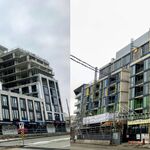voilan
New Member
Is there some detailed analysis of the problems on King which have arisen since 2018 (I've seen Steve Munro's overall analysis, but looking for something more granular)? While I'm sure enforcement is relatively lax and there are clearly enough violators for people to snap pictures and post them on social media, anecdotally King is still not very busy/congested (as I mentioned in this thread a few months ago). Seems near impossible that traffic on King today is worse than pre-2018, and yet the CityNews story posted a couple pages back claims worse travel times than back then.
Could cars backed up on N-S streets be part of the cause? Construction on King? Or TTC policy/norms changes on speed? I'd be ecstatic with robust enforcement as well, but just am doubtful that congestion on King itself is the main driver of increased travel times. Happy to be corrected.
Could cars backed up on N-S streets be part of the cause? Construction on King? Or TTC policy/norms changes on speed? I'd be ecstatic with robust enforcement as well, but just am doubtful that congestion on King itself is the main driver of increased travel times. Happy to be corrected.




